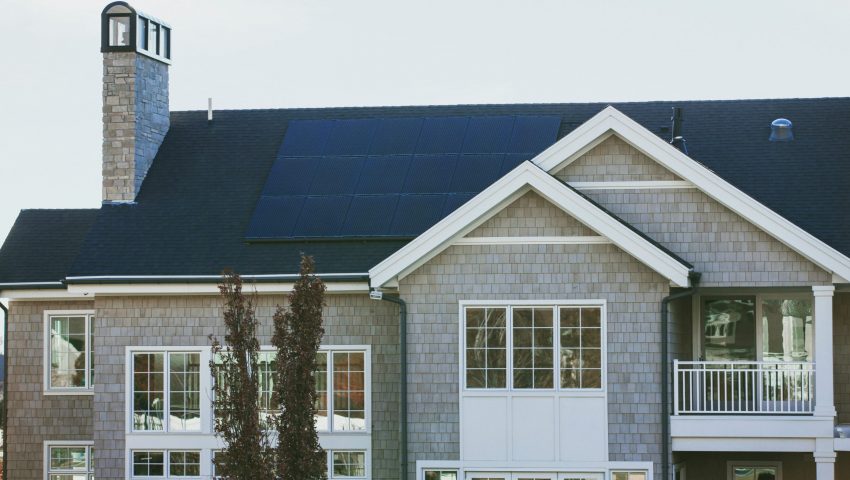Solar panel technology has come a long way in recent years. Once an opportunity only for the affluent, the advancements of this tech have made solar power accessible to most homeowners across the United States. In fact, according to Solar Energy Industries Association, “Solar accounted for 39% of all new electricity-generating capacity added in the U.S. in the first half of 2021.”
But is it worth the hype? How much energy can you actually get? Do solar panels work on cloudy days, or only with direct light? Let’s consider how solar panels work.
The Science of the Solar Panel System
Even though it may seem like the sun is necessary for solar panels to reach maximum efficiency, that’s actually not true. Solar panels are built with solar photovoltaic cells to produce electricity by taking advantage of solar energy through solar photovoltaic cells. These solar cells absorb sunlight and then convert the solar radiation into electrical energy. The solar system is able to function regardless of what time of day it is, or if it is raining or cloudy.
This versatility allows solar panels to be a reliable, durable form of renewable energy for even the most remote locations. With solar systems becoming increasingly more affordable, as well as an increase in technological advancements, this sustainable form of energy continues to make a positive impact on our environment.
A Few Things to Consider When Going Solar
If you’re thinking about solar panels for your home, there are a few things to keep in mind for them to work at their best. It’s important to consider your geographic location and the amount of direct sunlight that will reach the solar panels.
Is your roof big enough for the amount of panels required to power your home or business? Make sure you have an appropriate space with ample room for all solar panels as well as a smooth surface that won’t be disturbed by external factors.
Additionally, you’ll want to choose solar panels that are reliable and long-lasting, so they can generate solar energy efficiently. Taking these things into account will help ensure solar panels work optimally and give you the most benefit over time.
Cloudy Solar Power
While it may seem logical that solar panels only generate electricity from direct light, solar energy can actually be obtained in cloudy weather. This is because solar radiation penetrates clouds, resulting in a more filtered output.
According to various sources, it would equate to approximately 10-25% of how much solar panels generate electricity on sunny days. The solar homeowner that’s interested in panels to get off the grid should consider the possible need for solar battery storage to offset days where there is lower energy output due to cloudy weather.
The Perks of Clouds
In addition, clouds can even be helpful in reflecting and diffusing light when direct sunlight might cause a panel to overheat. Certain types of panels also have built-in reflectors and lenses which increase their effectiveness in low-light conditions. So while we certainly appreciate days with plenty of sunshine, they aren’t always necessary for a solar system to work at its best!
Things That Can Change How Much Solar Panels Produce
Power generation from solar panels can vary widely depending on several factors, and it’s important to be aware of this so you can make the most of solar energy. Cloud cover, atmospheric conditions, and the angle of the sun all affect solar panel performance.
Heat buildup, dirt, dust, and debris can also limit the solar system power output. Understanding these elements can help homeowners to better predict their solar panel efficiency when considering solar installations.
Just Because They’re Not Making Excess Power Doesn’t Mean They’re Useless!
Although cloudy days can reduce how much power solar panels can provide to your home or business, they’re still generating some solar energy. Don’t despair when you experience reduced solar generation on cloudy days – while indirect sunlight may cut into normal wattage levels produced by your system, the climate and seasonal changes in your area are normal and will adjust normal power output capabilities over time. Most systems are designed to factor in reoccurring weather patterns so that you can continue to experience beneficial solar energy generation.
Turn Your Cloudy Days into Energy Opportunities with Peak to Peak
With the right solar technology, clouds don’t have to be a hindrance when it comes to producing energy. But before you go solar, you’ve got to be sure your roof is ready for it. Peak to Peak Roofing has a team of roofing and solar experts to ensure your home is ready for enhanced energy production capabilities. Give us a call today with any of your other questions about how solar panels work!

